Contenido - Contents
Fotos de Rohan Shanti Shukla Rohan Shanti Shukla  स्वयम भू बृजनिधि श्री श्री राधारमण लाल जू Añadida el 02 de agosto  स्वयम भू बृजनिधि श्री श्री राधारमण लाल जू   ना नींद रहे ना चैन रहे, कुछ समझ ना मन को आये ! जब एक झलक की आस लिए दिल नाम वही दोहराये ! कभी हँसता है कभी रोता है क्या हुआ है इस पागल को ! इस इश्क का हाल तो जाने वही, ये रोग जिसे लग जाये ! तड़पता है मचलता है बस तेरी याद करता है ! तुझसे मिलने की कोशिश दिल मेरा दिन-रात करता है!  निगाहें हैं उनमें, कलाएँ भी उनमें, दिल को लुभाने की अदाएँ भी उनमें । किया याद दिल ने जब बुलाने के खातिर, बहाने बनाने के बहाने हैं उनमें। कड़ी धूप में जब झुलसता था यह तन, तपन को बुझाने की घटाएँ हैं उनमें। तन्हा था यह दिल अब जी न सकेंगे, हँसकर हँसाने की हँसिकाएँ हैं उनमें। मौत से लड़ रही थी जब यह ज़िन्दगी, उनको मनाने की सदाएँ हैं उनमें।........  नहीं भाया उनको मेरा मुस्कराना। दिया आंसुओं का मुझे नज़राना॥ सरल सा समर्पण नहीं भाया उनको, बनाया है मुझको हँसी का तराना। नहीं मांगे हमने कभी चाँद-तारे, दिया एक दिल ना हुए यूँ बेगाना। चाहत हमारी ना कुछ काम आई, सीखा उन्होंने बस सितम हम पे ढ़ाना। दिया सब लुटा बेवफ़ाई पे उनकी, नहीं आया हमको शम्मा सा जलाना। Cargado el 15 de marzo, 2010 |
Pâda-sevanam: (sáns. vaiëòava). literalmente significa servir los pies. Pero alguien podría preguntarse cómo puede un sâdhaka servir los pies del Señor. En su comentario Krama-sandarbha del Ärîmad-Bhâgavatam, Jîva Gosvâmî ha definido el pâda-sevanam de la siguiente manera: pâda-sevâyâê pâda äabdo bhakty eva nirdiëùa tata sevâyâê sâdaratvaê vidhîyate. “En el termino pâda-sevâ la palabra pada se refiere únicamente al bhakti. La palabra seva indica que este bhakti o servicio se debe hacer con gran amor y respeto”. Tener darsana de la Deidad; tocar a la Deidad; hacer parikrama de la Deidad; ir detrás de la Deidad en procesión; visitar los templos del Señor o los lugares sagrados como el Gaôga, Puruëottama-këetra, Dvârakâ y Mathurâ; observar las festividades vaisnavas y servir a los vaiëòavas y a tulasi están todos incluidos en el pâda-sevanam. Es una de las aôgas principales del bhakti.
Pâda-sevanam: (sáns. vaiëòava). literally means to serve the feet. However, the question arises as to how a sâdhaka can serve the feet of the Lord. Therefore in his Krama-sandarbha commentary on Ärîmad-Bhâgavatam, Jîva Gosvâmî has defined pâda-sevanam as follows: pâda-sevâyâê pâda äabdo bhakty eva nirdiëùa tata sevâyâê sâdaratvaê vidhîyate – “In the term pâda-sevâ the word pâda refers only to bhakti. The wordsevâ indicates that this bhakti, or service, should be done with great love and respect.” To take daräana of the Deity, to touch the Deity, to do parikramâ of the Deity, to follow the Deity in a procession, to visit the Lord’s temples or holy places such as the Gaôgâ, Puruëottama-këetra, Dvârakâ, and Mathurâ; to observe festivals, and to serve the Vaiëòavas and tulasî are all included in pâda-sevanam.This is one of the nine primary aôgas of bhakti.

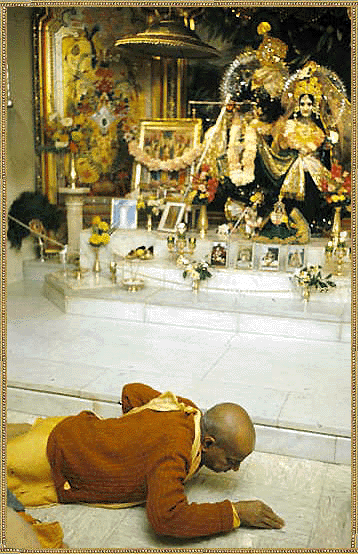
"According to one's taste and strength, hearing, chanting and remembrance may be followed by pada-sevanam. One obtains the perfection of remembering when one constantly thinks of the lotus feet of the Lord. Being intensely attached to thinking of the Lord's lotus feet is called pada-sevanam. When one is particularly adherent to the process of pada-sevanam, this process gradually includes other processes, such as seeing the form of the Lord, touching the form of the Lord, circumambulating the form or temple of the Lord, visiting such places as Jagannatha Puri, Dvaraka and Mathura to see the Lord's form, and bathing in the Ganges or Yamuna. Bathing in the Ganges and serving a pure Vaisnava are also known as tadiya-upasanam. This is also pada-sevanam. The word tadiya means "in relationship with the Lord." Service to the Vaisnava, Tulasi, Ganges and Yamuna are included in pada-sevanam. All these processes of pada-sevanam help one advance in spiritual life very quickly."
Srimad-Bhagavatam 7:5:23-24 Purport
"As far as meditation on the arca-vigraha form of the Lord is concerned, we have to look at the Deity beginning with His lotus feet. It is not that we immediately look at His smiling face. We should first try to see the lotus feet of Krsna, and when we are practiced in this way, we can look at His thighs, His waist and His chest. Then we can reach His smiling face. In this manner we should meditate on Krsna's form, and thus we can associate with Krsna by meditating on His smiling face, His flute, His hands, His dress, His consort Srimati Radharani and the other gopis surrounding Him. Thus we should practice observing the Supreme Lord, and to this end He has appeared before us as the arca-vigraha."
Teachings of Lord Kapila, Verse 36
"In this connection, Visvanatha Cakravarti Thakura informs us that the demigods worship the Supreme Lord in His various Deity forms (arca-vigraha) because except in the spiritual world, the Supreme Personality of Godhead cannot be directly worshiped in person. In the material world, the Lord is always worshiped as the arca-vigraha, or Deity in the temple. There is no difference between the arca-vigraha and the original person, and therefore those who are engaged in worshiping the Deity in the temple in full opulence, even on this planet, should be understood to be directly in touch with the Supreme Personality of Godhead without a doubt."
Srimad-Bhagavatam 5:17:14 Purport
"Lord Visnu was personally present at the sacrificial arena, but this does not mean that He had any interest in His own personal benefit. Similarly, the arca-vigraha, the Deity in the temple, is present for the same purpose. Out of His causeless mercy, the Supreme Personality of Godhead presents Himself before us so that we can see Him. Since we have no transcendental vision, we cannot see the spiritual sac-cid-ananda-vigraha of the Lord; therefore, out of His causeless mercy He comes in a form we can see. We can only see material things like stone and wood, and therefore He accepts a form of stone and wood and thus accepts our service in the temple. This is an exhibition of the Lord's causeless mercy. Although He has no interest in such things, in order to receive our loving service, He agrees to act as He does. We cannot actually offer suitable paraphernalia for the Lord's worship because we are completely ignorant."
Srimad-Bhagavatam 5:3:9 Purport
"Mayavadis and atheists accept the forms of the Deities in the temple of the Lord as idols, but devotees do not worship idols. They directly worship the Personality of Godhead in His arca incarnation. Arca refers to the form which we can worship in our present condition. Actually, in our present state it is not possible to see God in His spiritual form because our material eyes and senses cannot conceive of a spiritual form. We cannot even see the spiritual form of the individual soul. When a man dies we cannot see how the spiritual form leaves the body. That is the defect of our material senses. In order to be seen by our material senses, the Supreme Personality of Godhead accepts a favorable form which is called arca-vigraha. This arca-vigraha, sometimes called the arca incarnation, is not different from Him. Just as the Supreme Personality of Godhead accepts various incarnations, He takes on forms made out of matter--clay, wood, metal and jewels.
There are many sastric injunctions which give instructions for carving forms of the Lord. These forms are not material. If God is all-pervading, then He is also in the material elements. There is no doubt about it. But the atheists think otherwise. Although they preach that everything is God, when they go to the temple and see the form of the Lord, they deny that He is God. According to their own theory, everything is God. Then why is the Deity not God? Actually, they have no conception of God. The devotees' vision, however, is different; their vision is smeared with love of God. As soon as they see the Lord in His different forms, the devotees become saturated with love, for they do not find any difference between the Lord and His form in the temple, as do the atheists. The smiling face of the Deity in the temple is beheld by the devotees as transcendental and spiritual, and the decoration of the body of the Lord is very much appreciated by the devotees. It is the duty of the spiritual master to teach how to decorate the Deity in the temple, how to cleanse the temple and how to worship the Deity. There are different procedures and rules and regulations which are followed in temples of Visnu, and devotees go there and see the Deity, the vigraha, and spiritually enjoy the form because all of the Deities are benevolent. The devotees express their minds before the Deity, and in many instances the Deity also gives answers. But one must be a very elevated devotee in order to be able to speak with the Supreme Lord. Sometimes the Lord informs the devotee through dreams. These exchanges of feelings between the Deity and the devotee are not understandable by atheists, but actually the devotee enjoys them."
Srimad-Bhagavatam 3:25:35 Purport
"When Lord Krsna passed over the public roads, all the ladies from the respectable families of Dvaraka went up to the roofs of their palaces just to have a look at the Lord. They considered this to be the greatest festival.
Purport: To have a look at the Lord is a great festive occasion undoubtedly, as it was considered by the metropolitan ladies of Dvaraka. This is still followed by the devout ladies of India. Especially during the days of the Jhulana and Janmastami ceremonies, the ladies of India still throng up in the greatest number at the temple of the Lord, where His transcendental eternal form is worshiped. The transcendental form of the Lord installed in a temple is not different from the Lord personally. Such a form of the Lord is called arca-vigraha, or arca incarnation, and is expanded by the Lord by His internal potency just to facilitate the devotional service of His innumerable devotees who are in the material world. The material senses cannot perceive the spiritual nature of the Lord, and therefore the Lord accepts the arca-vigraha, which is apparently made of material elements like earth, wood and stone but actually there is no material contamination. The Lord being kaivalya (one alone), there is no matter in Him. He is one without a second, and therefore the Almighty Lord can appear in any form without being contaminated by the material conception. Therefore, festivities in the temple of the Lord, as held generally, are like festivals performed during the manifestive days of the Lord of Dvaraka, about five thousand years ago. The authorized acaryas, who know the science perfectly, install such temples of the Lord under regulative principles just to offer facilities to the common man, but persons who are less intelligent, without being conversant with the science, mistake this great attempt to be idol worship and poke their nose into that to which they have no access. Therefore, the ladies or men who observe festivals in the temples of the Lord just to have a look at the transcendental form are a thousand times more glorious than those who are nonbelievers in the transcendental form of the Lord."
Srimad-Bhagavatam 1:11:24
"When the Deity is being borne for a stroll in the street, a devotee should immediately follow the procession. (In this connection it may be noted that in India, especially in Visnu temples, the system is that apart from the big Deity who is permanently situated in the main area of the temple, there is a set of smaller Deities which are taken in procession in the evening. In some temples it is the custom to hold a big procession in the evening with a band playing and a nice big umbrella over the Deities, who sit on decorated thrones on the cart or palanquin, which is carried by devotees. The Deities come out onto the street and travel in the neighborhood while the people of the neighborhood come out to offer prasada. The residents of the neighborhood all follow the procession, so it is a very nice scene. When the Deity is coming out, the servitors in the temple put forward the daily accounts before Them: so much was the collection, so much was the expenditure. The whole idea is that the Deity is considered to be the proprietor of the whole establishment, and all the priests and other people taking care of the temple are considered to be the servants of the Deity. This system is very, very old and is still followed. So, therefore, it is mentioned here that when the Deity is on stroll the people should follow behind.)
A devotee must visit a Visnu temple at least once or twice every day, morning and evening. In Vrndavana this system is followed very strictly. All the devotees in town go every morning and evening to visit different temples. Therefore during these times there are considerable crowds all over the city. There are about five thousand temples in Vrndavana city. Of course it is not possible to visit all the temples, but there are at least one dozen very big and important temples which were started by the Gosvamis and which should be visited.
One must circumambulate the temple building at least three times. In every temple there is an arrangement to go around the temple at least three times. Some devotees go around more than three times--ten times, fifteen times--according to their vows. The Gosvamis used to circumambulate Govardhana Hill. One should also circumambulate the whole Vrndavana area.
One must worship the Deity in the temple according to the regulative principles. Offering arati and prasada, decorating the Deity, etc.--these things must be observed regularly.)
Nectar of Devotion, Chapter 6 Exceprts
"The devotee should regularly see My statues in the temple, touch My lotus feet and offer worshipable paraphernalia and prayer. He should see in the spirit of renunciation, from the mode of goodness, and see every living entity as spiritual.
Purport: Temple worship is one of the duties of a devotee. It is especially recommended for neophytes, but those who are advanced should not refrain from temple worship. There is a distinction in the manner a neophyte and an advanced devotee appreciate the Lord's presence in the temple. A neophyte considers the arca-vigraha (the statue of the Lord) to be different from the original Personality of Godhead; he considers it a representation of the Supreme Lord in the form of a Deity. But an advanced devotee accepts the Deity in the temple as the Supreme Personality of Godhead. He does not see any difference between the original form of the Lord and the statue, or arca form of the Lord, in the temple. This is the vision of a devotee whose devotional service is in the highest stage of bhava, or love of Godhead, whereas a neophyte's worship in the temple is a matter of routine duty.
Temple Deity worship is one of the functions of a devotee. He goes regularly to see the Deity nicely decorated, and with veneration and respect he touches the lotus feet of the Lord and presents offerings of worship, such as fruits, flowers and prayers. At the same time, to advance in devotional service, a devotee should see other living entities as spiritual sparks, parts and parcels of the Supreme Lord. A devotee is to offer respect to every entity that has a relationship with the Lord. "
Srimad-Bhagavatam 3:29:16
"The form of the Lord known as arca-vigraha is an expansion of His unlimited potencies. When the Lord is gradually satisfied with the service of a devotee, in due course of time He accepts the devotee as one of His many unalloyed servants. By nature, the Lord is very compassionate; therefore the service of neophyte devotees is accepted by the Lord. As confirmed in Bhagavad-gita (9.26):
patram puspam phalam toyam
yo me bhaktya prayacchati
tad aham bhakty-upahrtam
asnami prayatatmanah"If one offers Me with love and devotion a leaf, a flower, fruit or water, I will accept it." The devotee offers eatables in the form of vegetables, fruits, leaves and water to the arca-vigraha. The Lord, being bhakta-vatsala, compassionate upon His devotees, accepts these offerings. Atheists may think that the devotees are engaged in idol worship, but the fact is different. Janardana, the Supreme Lord, accepts bhava, the attitude of service. The neophyte devotee engaged in the worship of the Lord may not understand the value of such worship, but the Supreme Lord, being bhakta-vatsala, accepts His devotee and in due course of time takes him home.
In this connection there is a story about a brahmana who was offering sweet rice to the Lord within his mind. The brahmana had no money nor any means of worshiping the Deity, but within his mind he arranged everything nicely. He had gold pots to bring water from the sacred rivers to wash the Deity, and he offered the Deity very sumptuous food, including sweet rice. Once, before he offered the sweet rice, he thought that it was too hot, and he thought, "Oh, let me test it. My, it is very hot." When he put his finger in the sweet rice to test it, his finger was burned and his meditation broken. Although he was offering food to the Lord within his mind, the Lord accepted it nonetheless. Consequently, the Lord in Vaikuntha immediately sent a chariot to bring the brahmana back home, back to Godhead. Thus it is the duty of every sincere devotee to accept the arca-vigraha at home or in the temple and worship the form of the Lord as advised in authorized scriptures and directed by the spiritual master."
Srimad-Bhagavatam 4:30:28 Purport
Bhaktivedanta Book Trust. HDG A.C. Bhaktivedanta Swami Srila Prabhupada.
http://www.harekrsna.com/practice/process/pada-sevanam/pada-sevanam.htm
Fuentes - Fonts
SOUV2P.TTF - 57 KB
SOUV2I.TTF - 59 KB
SOUV2B.TTF - 56 KB
bai_____.ttf - 46 KB
babi____.ttf - 47 KB
bab_____.ttf - 45 KB
SOUV2T.TTF - 56 KB
inbenr11.ttf - 64 KB
inbeno11.ttf - 12 KB
inbeni11.ttf - 12 KB
inbenb11.ttf - 66 KB
balaram_.ttf - 45 KB
indevr20.ttf - 53 KB
Disculpen las Molestias
| Conceptos Hinduistas (1428)SC |
|---|
Category:Hindu (mythology) (3256)SC | Category:Hindu mythology (3270)SC | Categoría:Mitología hindú (3288)SC (indice) | Categoría:Mitología hindú (videos) (3289)SC | Conceptos Hinduista (A - G) SK y SC (videos) (3294)SC Aa-Anc · Aga - Ahy · Ai - Akshay · Akshe - Amshum · Ana - Ancie · Ang - Asvayu · Ata - Az · Baa-Baz · Be-Bhak · Bhal-Bu · C · Daa-Daz · De · Dha-Dry · Du-Dy · E · F · Gaa-Gayu · Ge-Gy · Ha-He · Hi-Hy · I · J · K · Ka - Kam · Kan - Khatu · Ki - Ko · Kr - Ku · L · M · N · O · P · R · S · Saa-San · Sap-Shy · Si-Sy · Ta - Te · U · V · Ve-Vy · Y · Z |
| Conceptos Hinduistas (2919)SK · (2592)SK |
|---|
Aa-Ag · Ah-Am · Ana-Anc · And-Anu · Ap-Ar · As-Ax · Ay-Az · Baa-Baq · Bar-Baz · Be-Bhak · Bhal-Bhy · Bo-Bu · Bra · Brh-Bry · Bu-Bz · Caa-Caq · Car-Cay · Ce-Cha · Che-Chi · Cho-Chu · Ci-Cn · Co-Cy · Daa-Dan · Dar-Day · De · Dha-Dny · Do-Dy · Ea-Eo · Ep-Ez · Faa-Fy · Gaa-Gaq · Gar-Gaz · Ge-Gn · Go · Gra-Gy · Haa-Haq · Har-Haz · He-Hindk · Hindu-Histo · Ho-Hy · Ia-Iq · Ir-Is · It-Iy · Jaa-Jaq · Jar-Jay · Je-Jn · Jo-Jy · Kaa-Kaq · Kar-Kaz · Ke-Kh · Ko · Kr · Ku - Kz · Laa-Laq · Lar-Lay · Le-Ln · Lo-Ly · Maa-Mag · Mah · Mai-Maj · Mak-Maq · Mar-Maz · Mb-Mn · Mo-Mz · Naa-Naq · Nar-Naz · Nb-Nn · No-Nz · Oa-Oz · Paa-Paq · Par-Paz · Pe-Ph · Po-Py · Raa-Raq · Rar-Raz · Re-Rn · Ro-Ry · Saa-Sam · San-Sar · Sas-Sg · Sha-Shy · Sia-Sil · Sim-Sn · So - Sq · Sr - St · Su-Sz · Taa-Taq · Tar-Tay · Te-Tn · To-Ty · Ua-Uq · Ur-Us · Vaa-Vaq · Var-Vaz · Ve · Vi-Vn · Vo-Vy · Waa-Wi · Wo-Wy · Yaa-Yav · Ye-Yiy · Yo-Yu · Zaa-Zy |

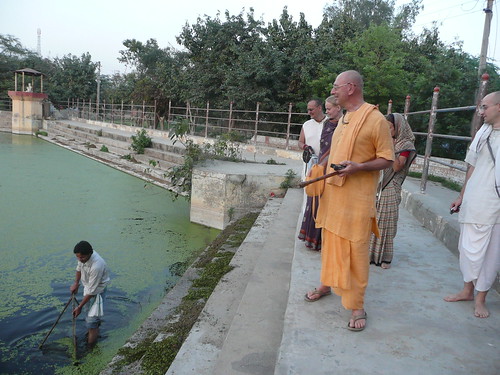

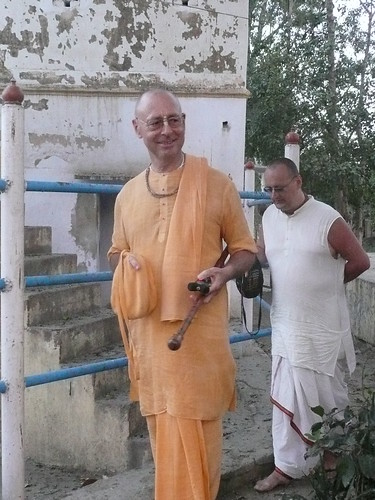
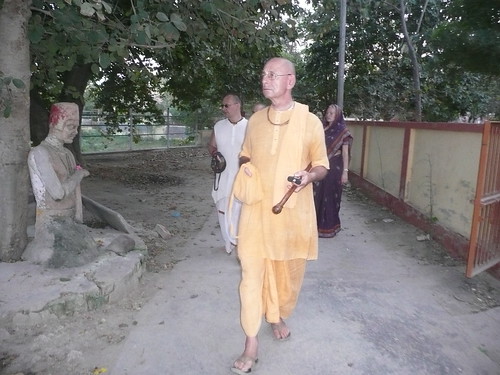
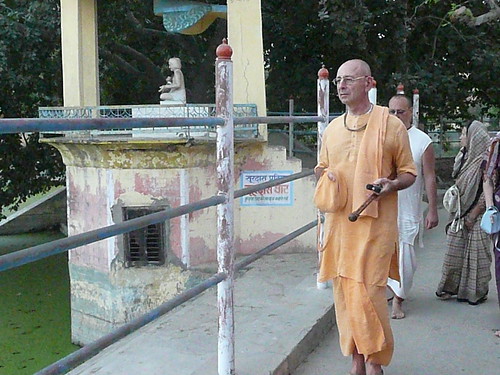

No hay comentarios:
Publicar un comentario